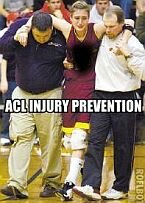Football Combine Training

FOOTBALL COMBINE TRAINING consists of body measurements, physical tests and position-specific drills. Physical tests are used to determine a player's size, speed, quickness and strength. Position drills allow players to demonstrate their ability in fundamental skill areas necessary for their position.
|
"Dramatically improve your athletes'
|
COMBINES
National Underclassman Combine
Junior Football Combine Showcase
Body measurements consist of height, weight, hand span (measured from tip of thumb to tip of pinky), arm length (measured from shoulder blade to tip of middle finger), and body portrait (players are photographed from the front wearing shorts only).
PHYSICAL TESTS
Bench Press: An accurate measure of a football player's strength? No. But it's what they test so you better get it right. Maximizing one's bench not only requires strength but flawless technique. At the signal from the tester, the athlete will bench press a certain weight (either 130 lb., 150 lb., 165 lb., 185 lb. or 225 lb. depending on position and age) as many times as possible. The bar much touch the chest on each repetition and no bouncing on the chest is allowed. The elbows must fully extend at the top of press on each repetition. The feet cannot move and the buttocks must remain in contact with the bench at all times.
Pro Agility Test (Also known as 5-10-5, Pro Shuttle, 20 yard Shuttle): This test demonstrates lateral movement critical to the game. Again practice, coupled with proper technique, makes perfect. At the signal from the tester the athlete moves laterally (to the right or left) and touches the designated line or cone 5 yards away. The athlete then moves in the opposite direction and touches the line or cone that is 10 yards away. After touching the line the athlete runs back through the start/finish line. The drill is done in both directions. A rolling start is not allowed. Two attempts, one to the right and one to the left are given. No rolling start is allowed. One hand must be on the start line and the body cannot cross the line before the start.
Three Cone Drill (Also known as "L" drill): By far the most complicated drill; proper execution and technique are the keys to a good time. The drill must be practiced or you are doomed to be slow. At the signal from the tester the athlete sprints forward 5 yards and touches the line, turns around and sprints back 5 yards and touches the line, forward 5 yards and then turns right and runs 5 yards making a figure 8 around a cone and then sprints through the finish. The drill is done in both directions. A rolling start is not allowed. Two attempts are usually given.
40-yard Dash: The 40 remains the highlight of the combine regardless of position and is a measure of straight ahead speed. Proper technique, from a clean, efficient and powerful start, to rapid acceleration, to maximum velocity are all critical to all out speed. Each phase must be perfected to obtain optimal results, and as every phase is mastered, there exist opportunities to lower one's time. A disaster here cannot be salvaged by success in the other events. Two or three attempts are given. No rolling start is allowed. Timing starts at the first movement of the athlete.
Standing Long Jump or Broad Jump: At the signal from the tester, the athlete jumps forward as far as possible while landing on both feet. Both feet must be behind the start line before jumping and the jump must start from a stationary position. Two attempts are usually given. This test is a good measure of an athlete's "explosive power." Here again, technique reigns supreme.
Vertical Jump: The vertical jump is a measure of lower body strength and power. The test is conducted using the Vertec measuring device. The jump is a coordinated skill involving a rapid exchange between eccentric and concentric actions culminating with an accurate "touch" for maximum height. Proper foot and arm placement and timing body decent are the keys to a good jump. This event is commonly under-trained, but is one where proper technique and practice can really make a difference. At the signal from the tester and from a stationary position, the athlete jumps as high as possible and touches (with one hand) the highest vane possible on the Vertec vertical jump-testing device. In order to prepare for the jump, the athlete may bend at the knees and swing the arms. The athlete cannot take any steps prior to the jump. Two attempts are usually given.
WHAT TO BRING
Cleats, Track Shoes or Running Shoes, Highlight Tape (for Rivals.com and Ultimate 100 camp consideration), Water or Gatorade type drink, a meal replacement bar or some healthy snack, and a winning attitude!
POSITION SPECIFIC DRILLS
Quarterback
QB's perform a series of 3, 5 and 7 step drops while throwing to stationary receivers. QBs throw to to TEs, RBs and WR's during the 1-on-1 coverage drills.
Runningback
RB's run routes against LB's in 1-on-1 pass coverage.
Tight End
TE's run routes against LB's in 1-on-1 pass coverage.
Wide Receiver
WR's run routes against DB's in 1-on-1 pass coverage.
Offensive Line
OL are timed in 10/20 yard dash. OL perform agility and pass block drills.
Defensive Line
DL are timed in 10/20 yard dash. DL perform agility and pass rush drills.
Linebacker
LB's cover RB's in 1-on-1 pass coverage.
Defensive Back
DB's cover WR's in 1-on-1 pass coverage.
Punters
Punters perform the Baseline Strength Test and Random Selection Scenario Test. During the Baseline Strength Test, punters are measured for hang time, distance and get-off time. During the Random Selection Scenario Test, punters are tested on their ability to perform various punts evaluating ball control.
Kickers
Kickers perform kickoffs and field goals. During kick-off tests, kickers will be measured for hang time, location and distance. During FG tests, kickers will be asked to kick FG's at randomly selected distances from 30-55 yards from both hashmarks.
Long Snap
Players experienced in long snapping are tested at both 7 and 15 yards. Each player completes 7 snaps at each distance and is graded on time and accuracy.
Position Specific Drills from Combines.com
Rehabilitation and Injury Care
Most athletes have previous injuries or nagging pains that need medical attention by a Active Release Techniques (ART) is a new non-invasive treatment used to correct conditions arising from overuse, repetitive stress injuries and to enhance athletic performance. ART is a hands-on therapy, designed to restore the normal texture and tension to soft tissue allowing full function and movement. ART breaks down scar tissue and adhesions that form within or between soft tissue. What attracts so many athletes to ART are the quick and lasting results without resorting to surgery. Dr. Horwitz is certified in ART and is a competitive powerlifter with a triple bodyweight deadlift.
Maryland Sports Injury Center
12200 Tech Road, Suite 104
Silver Spring, MD 20904
301-622-9000
|
The Ultimate Nutritional Lie Detector Test LEARN MORE 
|
Kettlebell Rehab

Click Here
To See How Kettlebells will transform your body!
Vortex Rehab

Click Here
To See How This
Revolutionary Machine
Can Help You!
Partner / Support

Loans up to 3 months - fast cash advances for up to 90 days and up to $5,000!




















